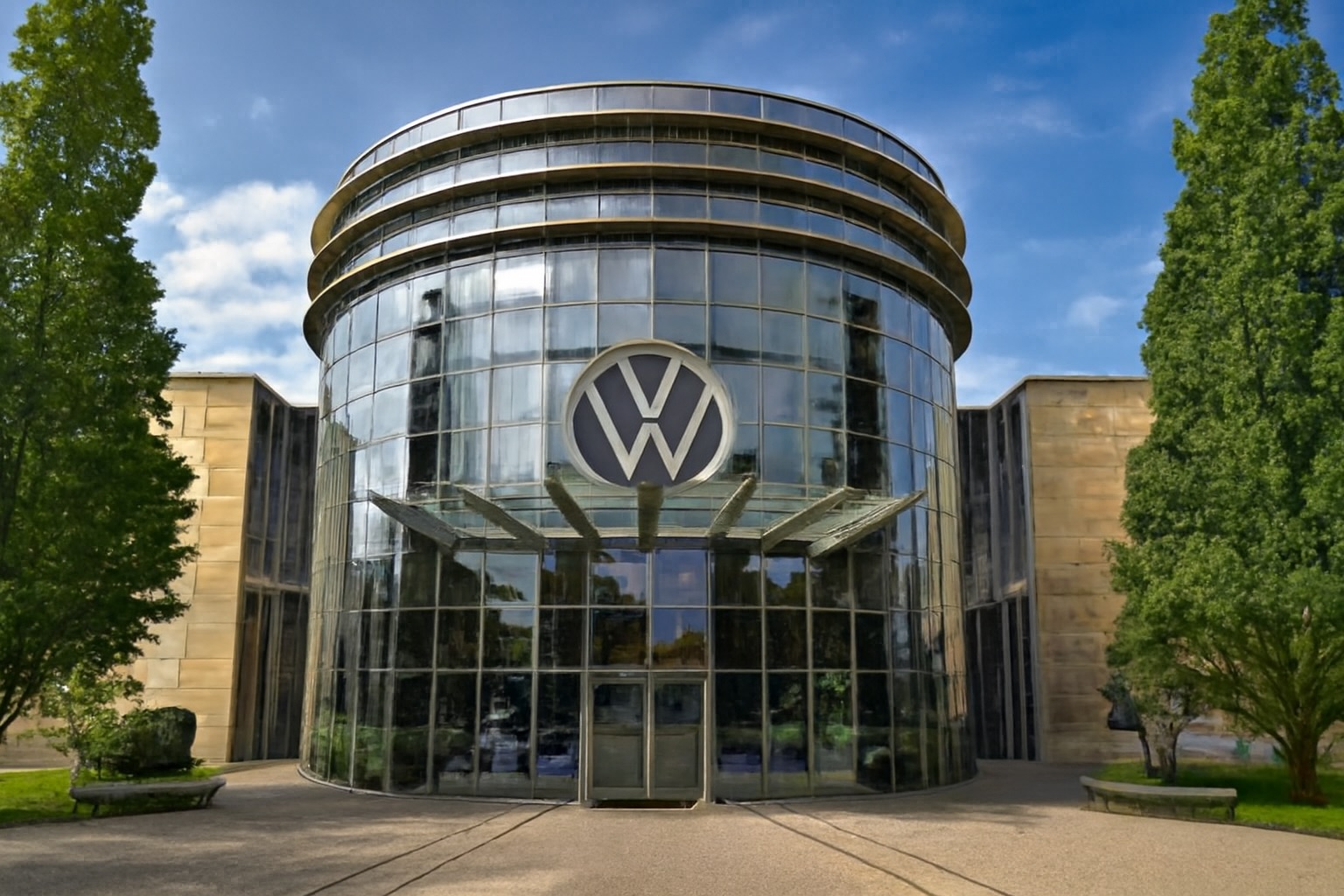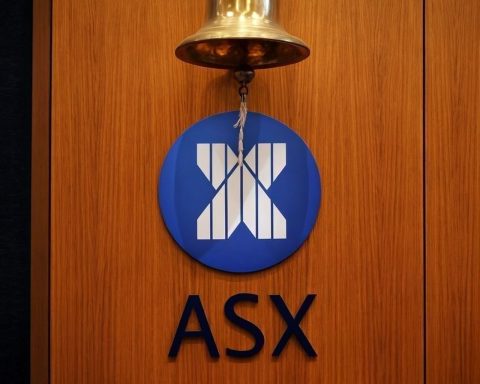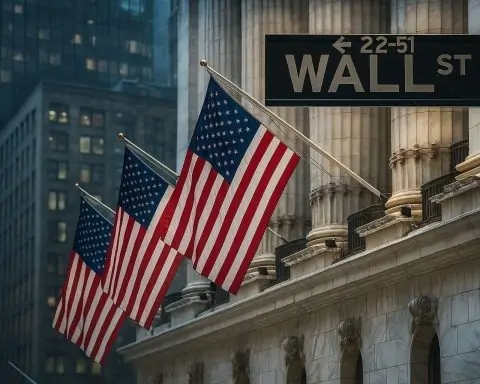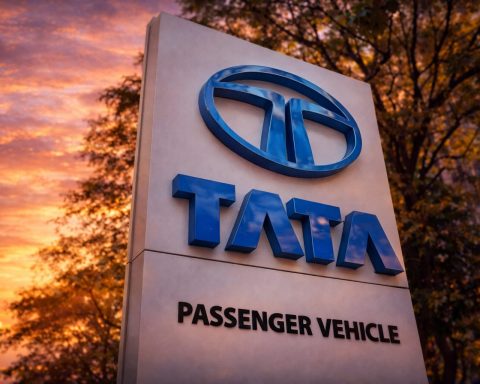- Chip supply shock: A Netherlands–China dispute over chipmaker Nexperia has halted deliveries of crucial auto semiconductors, threatening production at Volkswagen and other carmakers [1] [2]. Volkswagen’s Wolfsburg plant – the world’s largest car factory – is bracing for possible downtime if the stalemate isn’t resolved, according to German media reports.
- Automakers sound alarm: Industry groups warn existing chip inventories will run out within weeks, risking factory shutdowns worldwide. The European auto association ACEA is “deeply concerned” that a prolonged Nexperia ban could disrupt vehicle manufacturing across Europe and beyond [3], with one German trade body even fearing a “standstill in large parts of global auto production” [4].
- Scramble for alternatives: Carmakers are scrambling to secure chips elsewhere. Taiwanese semiconductor firms report a surge of emergency orders as automakers seek substitutes [5]. Spot prices for some automotive chips have already spiked 5–20% and lead times stretched beyond 12 weeks amid the shortage [6].
- Geopolitics at play: The crisis erupted after the Dutch government seized control of Nexperia (a Dutch-based, Chinese-owned chipmaker) on national security grounds [7]. In retaliation, Beijing blocked Nexperia’s China plants from exporting chips on Oct. 4 [8]. Nexperia’s Chinese parent, Wingtech, blasted the Dutch move as “geopolitical” and saw its stock plunge 10% in Shanghai on the news [9].
- Outlook uncertain: Volkswagen and BMW say their production has not yet stopped [10], but they’re urgently reviewing supply lines [11]. Negotiations are underway – Dutch officials plan talks with China within days [12] – yet automakers warn time is short. “If the shipment of automotive chips doesn’t resume – quickly – it’s going to disrupt auto production” across multiple countries, cautions John Bozzella of the U.S. auto alliance [13].
Chip Dispute Threatens Volkswagen’s Output
A new chip crisis is looming over Volkswagen just as the industry hoped supply shortages were easing. Nexperia – a major supplier of the tiny electronic components that go into every modern vehicle – has told automakers it “could no longer guarantee” chip deliveries as of mid-October [14]. The warning came after an unprecedented intervention by the Dutch government: on September 30, officials invoked emergency laws to take control of Nexperia, ousting its China-appointed CEO amid concerns sensitive technology could leak to China [15] [16].
Beijing swiftly retaliated. China’s Commerce Ministry issued an export ban effective October 4 that prohibits Nexperia’s China factories from shipping out certain chip products [17]. In effect, a huge slice of Nexperia’s production – much of which is assembled or tested in China – is now cut off from the global market. Nexperia’s headquarters called the situation a contractual force majeure and scrambled to allocate its limited inventory to customers [18]. But for automakers, many of which rely on Nexperia’s chips, the sudden freeze set off alarms.
Volkswagen (VW), Europe’s biggest carmaker, has been hit particularly hard by the uncertainty. Nexperia is not a direct supplier to VW’s assembly lines, but its chips are embedded in numerous parts from VW’s Tier-1 suppliers (for example, in engine control units, sensors, and power electronics) [19]. VW confirmed that some Nexperia components are used in its vehicles and said it is in “close contact with all relevant stakeholders… to identify potential risks at an early stage” [20]. As of last week, VW stressed its production had not yet been affected and no plants were idled [21].
Behind the scenes, however, VW is preparing for the worst. Internal teams are assessing how long existing chip stocks can last and which models would be hit first. According to German press reports, VW is even considering shorter work weeks or temporary halts if supplies dwindle, with its flagship Wolfsburg factory (which builds the Golf and other high-volume models) seen as vulnerable. While the company hasn’t publicly announced any stoppages, the risk of a production pause is real – potentially within weeks – unless Nexperia’s shipments resume or alternative chips are secured.
VW’s predicament is compounded by its broader challenges. The automaker is already grappling with an EV sales slowdown and cost-cutting pressures, which had led to plans for reduced output at some plants even before this chip flare-up. Now, the Nexperia crisis adds a fresh supply-chain threat that could further undermine VW’s output targets. “We give out more money than we take in – that can’t go well for long,” VW’s finance chief Arno Antlitz recently told employees, warning of tough measures ahead [22]. A forced downtime due to missing chips would be another blow to VW’s financial recovery efforts. VW’s share price has been languishing near multi-year lows around €90–95, and news of any factory shutdown could spook investors even more.
Automakers Warn of Global Production Crunch
It’s not just Volkswagen. Carmakers worldwide are sounding the alarm over the Nexperia impasse. The European Automobile Manufacturers’ Association (ACEA) – representing giants from VW, BMW and Mercedes to Stellantis and Toyota Europe – issued an unusually urgent warning. Existing chip inventories at auto plants and suppliers will only cover a few weeks of production, ACEA said, and if Nexperia’s shipments don’t restart, assembly lines could grind to a halt soon after [23]. “We are deeply concerned by potential significant disruption to European vehicle manufacturing if the interruption of Nexperia chip supplies cannot be immediately resolved,” ACEA Director General Sigrid de Vries said [24]. She emphasized that this is a “cross-industry issue affecting a large number of suppliers and virtually all of our members.” In other words, almost every car brand in Europe is at risk, since Nexperia’s parts are ubiquitous in automotive electronics.
German industry association ZVEI, which represents electronics and semiconductor firms, was even more blunt, reportedly saying a prolonged Nexperia export stop threatens a “standstill in large parts of the worldwide automotive production” [25]. The domino effect could extend beyond autos into industrial electronics, given how many devices use Nexperia’s basic chips.
Across the Atlantic, U.S. carmakers echoed those fears. The Alliance for Automotive Innovation – the lobby group for Big Three automakers and top foreign brands like Toyota and VW in the U.S. – urged a quick resolution and warned that American plants could start running out of parts within next month if nothing changes [26]. “If the shipment of automotive chips doesn’t resume – quickly – it’s going to disrupt auto production in the U.S. and many other countries and have a spillover effect in other industries,” Alliance CEO John Bozzella cautioned [27]. Some automakers told Reuters that certain U.S. factories could be affected as early as November [28].
For now, most car factories are still running. BMW said this week that its production continues as planned, though some parts of its supplier network “were already being affected” by the Nexperia situation [29]. Mercedes-Benz and Renault have also mobilized task forces to monitor their chip supplies. But these companies remember all too well the 2021 chip shortage, when a dearth of semiconductors forced repeated production cuts. Volkswagen, for instance, lost an estimated half a million vehicles of output that year due to chip bottlenecks [30]. No one wants a repeat – especially not from a single supplier’s sudden collapse.
The urgency has reached government levels. The Dutch economy ministry says the “situation has its full attention” and it’s in talks with Chinese authorities and affected European nations to find solutions [31] [32]. Dutch Economy Minister Vincent Karremans announced he expects to meet a high-ranking Chinese official within days to discuss resolving the dispute [33]. Observers say a possible compromise could involve guarantees about Nexperia’s governance or technology, allowing China to lift its export block. The stakes are high: unless diplomacy can unlock the flow of these unglamorous but essential chips, the global auto industry may face an involuntary slowdown heading into the end of 2025.
Why Nexperia’s Chips Are Hard to Replace
The paradox of the situation is that Nexperia doesn’t make cutting-edge, high-tech chips like advanced processors. It specializes in “mature” semiconductors – basic building-block chips such as diodes, transistors, and MOSFET power switches that have been produced for decades [34]. These parts are inexpensive and often overlooked, but modern cars contain hundreds of them, from the ignition system to power steering, brake sensors, infotainment units and more [35] [36]. They perform simple yet vital functions (e.g. regulating voltage, protecting circuits, switching signals) that keep vehicle electronics running safely.
Because these components are standardized, one might assume automakers could easily swap to another supplier. The reality is more complicated. Nexperia’s devices are highly trusted and qualified for automotive use – many carry strict AEC-Q100/101 certifications for reliability under harsh conditions [37]. Designing in a new supplier’s chip isn’t as simple as buying off-the-shelf; it often requires re-testing and re-certifying the component in the vehicle, a process that can take months. “Switching to alternative suppliers means recertifying components through lengthy homologation processes that cannot be compressed into days or weeks,” one industry analysis noted [38] [39]. In other words, even if another company makes a similar diode or transistor, a carmaker can’t just plug it into existing circuit boards without thorough validation.
Moreover, these chips typically arrive at automakers indirectly, embedded in larger parts. Nexperia might sell its semiconductors to a Tier-1 supplier like Bosch or Denso, which then builds an engine controller or airbag system that is delivered to VW or BMW [40]. The automaker might not even be fully aware that a specific Nexperia chip is inside a module until a crisis like this hits. Tracing every instance is a “formidable challenge,” and many suppliers themselves lack complete visibility into all the sub-components they use [41]. This opaque supply chain makes rapidly substituting components extremely difficult. As one report observed, a single tiny chip failing to arrive can cascade into shutting down an entire auto production line because that one missing piece holds up the delivery of a critical module [42].
All of this explains why the auto industry is rattled by Nexperia’s woes. These are not high-margin, high-profile chips – they’re commodity parts, but ones that are everywhere and must work reliably. Nexperia happens to be a world leader in many of these categories: it’s ranked #1 globally in small-signal diodes and transistors, #2 in logic ICs, and #1 in certain MOSFETs used for power management, according to industry data [43]. In automotive-grade MOSFETs, it’s second only to Infineon [44]. So when Nexperia sneezes, a lot of suppliers catch a cold. As Reuters noted, Nexperia’s chips “though not technically sophisticated, are widely used in high volumes” across autos and electronics [45].
Chip Shortage Spurs Price Spikes and “Plan B” Moves
With no quick fix in sight, automakers and suppliers have activated their contingency plans. One immediate consequence of the Nexperia export ban is a tightening market and rising prices for the types of chips it makes. Industry reports say the global market for power semiconductors (the kind Nexperia specializes in) has flipped into severe imbalance since mid-October [46]. Inventories of certain transistors and MOSFETs have “tightened sharply” and some models are already on backorder. Lead times for automotive-grade chips that used to be readily available are now stretching beyond 12 weeks [47].
Not surprisingly, prices are climbing. Some traders and distributors report spot prices jumping by mid-single to low-double digits. For common diodes and MOSFETs, prices have risen 5% to 15% in Q4 so far, according to estimates, and could surge higher if the shortage persists [48]. More advanced or specialized auto chips (for example, certain high-end power management ICs used in electric vehicles or industrial control) are seeing even steeper hikes – over 20% in some cases [49]. These price increases reflect both panic-buying and genuine scarcity as companies hoard what they can. It’s worth noting that many automakers had just recovered from the last chip crunch and were expecting component costs to stabilize; instead, they’re now confronted with a new round of inflation in critical parts.
Carmakers are also diversifying suppliers on the fly. Manufacturers in Taiwan, a major global hub for semiconductors, say they’ve been inundated with urgent inquiries for replacement parts [50]. Taiwan’s Economic Daily News reports that European and U.S. automakers and their suppliers have recently turned to Taiwanese chipmakers for help [51]. Companies that produce similar discrete automotive chips – such as Diodes Inc., ON Semiconductor, STMicroelectronics, Infineon or various Asian firms – are receiving “rush orders” as the big car brands try to fill the gap. This has led to a notable uptick in orders for Taiwan’s automotive semiconductor firms in particular [52]. While some of these alternate suppliers can increase output, they may not fully cover the shortfall. And as mentioned, substituting parts might require engineering tweaks or regulatory sign-off. Still, having any stopgap is better than nothing for automakers determined to keep their assembly lines running.
In China, interestingly, Nexperia’s own Chinese subsidiary has asserted its independence amid the chaos. In an unusual move, Nexperia’s China unit publicly told its employees that they should “reject any external instructions” not approved by local (Chinese) management – essentially urging staff to ignore orders from the Dutch head office [53]. It also said salaries and bonuses in China will be paid by the Chinese entity, not the Dutch parent [54]. This bold stance came after the Dutch court suspended Nexperia’s former CEO (Wingtech-appointed) for alleged mismanagement. Nexperia’s headquarters in the Netherlands responded that any claims it “abandoned” the Chinese market are false, calling such messages “factually incorrect and misleading” [55]. The episode underscores how fraught internal operations have become, with the East-West tensions playing out even inside the company. While Nexperia’s factories in China try a 4-days-on, 3-days-off schedule to conserve inventory [56], its main European fab in Hamburg continues to churn out wafers – but much of that output still needs Chinese facilities for packaging, which remain under export lock. The longer this drags on, the more pressure will build to find a resolution.
Stocks Slide and Forecasts Grow Cloudy
The semiconductor saga is also reverberating through financial markets. In China, Wingtech Technology – Nexperia’s parent company – saw its shares nosedive when news broke of the Dutch takeover. Investors dumped Wingtech’s stock, fearing the loss of Nexperia’s revenue and the broader geopolitical risks. On October 13, Wingtech’s Shanghai-listed shares plummeted the daily limit of 10% [57] and have struggled to recover since. Analysts warn that Wingtech could face a significant hit to earnings if Nexperia’s exports remain constrained, since around half of Nexperia’s sales are to the Chinese market and 80% of its production capacity is in China [58] (now effectively idled). The episode has become a cautionary tale about East-West decoupling in tech: Wingtech’s acquisition of Nexperia in 2019 was meant to be a success story, but the company is now caught in geopolitical crossfire that investors find hard to handicap.
European auto stocks have also been under pressure. Volkswagen’s shares are down about 20% year-to-date (amid broader industry challenges), and this chip uncertainty hasn’t helped sentiment. So far, the market impact on Western automakers has been somewhat muted – possibly because production hasn’t yet been visibly disrupted. VW’s preferred shares ticked up slightly after it reported better-than-feared earnings last week, closing around €92 [59], but traders are wary. If VW or any major OEM announces an actual production halt due to chip shortages, a sharper stock reaction is likely. BMW, Daimler Truck, Stellantis, and others are all monitoring the situation closely, knowing that a widespread parts shortage would force profit warnings. “It’s one more risk factor for the fourth quarter,” as one Frankfurt analyst told local media, “but if resolved soon, the impact might be contained”.
Right now, much hinges on diplomatic and legal outcomes. The Dutch and Chinese governments have opened talks to restore some normalcy – possibly by carving out exceptions or oversight arrangements that satisfy both sides [60]. An optimist might forecast that chip shipments could resume within weeks if an agreement is reached (for example, allowing Nexperia to ship to automakers under special licenses). In that case, automakers could likely manage with minor disruptions, using inventory buffers and alternative sourcing to bridge the gap. Some industry insiders note that year-end holidays in December could act as a natural circuit-breaker – even if chip supplies are tight through November, many European plants have planned winter shutdowns where they could make up lost component deliveries.
A pessimist, however, warns that if the stalemate drags into December or beyond, we could see rolling factory shutdowns in the auto sector. Smaller suppliers might run out of key Nexperia parts, causing a chain reaction. Automakers would then face tough choices on allocating the chips they do have to certain models or plants. This would come at an already challenging time as they ramp up new EV launches and battle economic headwinds in key markets.
For now, companies are in a waiting game – pressing governments for a solution while simultaneously hedging their bets. As one industry source told Automotive Manufacturing Solutions, “Supply is about to evaporate” if Nexperia can’t ship [61]. Automakers are effectively racing the clock. Every week that passes without a resolution is one week closer to halted production lines.
The next big development to watch is the outcome of Netherlands–China negotiations. Any signal of compromise – for instance, allowing certain chip categories to be exported again – would be greeted with relief. It could stabilize the market and prices, and allow Nexperia to gradually restart deliveries, averting the worst-case scenario for carmakers. On the other hand, if talks falter and the export ban remains in place, automakers will grow increasingly anxious and could start announcing pre-emptive cutbacks to conserve parts.
In summary, a high-stakes semiconductor standoff now threatens to throw sand in the gears of global car production. Volkswagen’s Wolfsburg plant, an icon of Germany’s auto might, suddenly faces the specter of idling because a steady flow of tiny Chinese-made chips has been choked off. The coming days will be crucial. The world’s automakers have survived COVID-19 lockdowns, supply chain turmoil and past chip droughts – but this latest challenge is a test of how well East and West can cooperate (or not) in a fraught geopolitical climate. If diplomacy succeeds, the crisis may ease as quickly as it erupted. If not, Volkswagen and its peers could be headed for a rough winter of supply shortages, production cuts, and another scramble to find the silicon lifeblood their modern vehicles demand.
Sources: Reuters [62] [63] [64]; Frankfurter Allgemeine Zeitung [65]; Automotive Manufacturing Solutions [66] [67]; TrendForce [68] [69]; Handelsblatt; company statements.
References
1. www.reuters.com, 2. www.automotivemanufacturingsolutions.com, 3. www.automotivemanufacturingsolutions.com, 4. www.faz.net, 5. www.trendforce.com, 6. www.trendforce.com, 7. www.reuters.com, 8. www.reuters.com, 9. www.automotivemanufacturingsolutions.com, 10. www.reuters.com, 11. www.reuters.com, 12. www.trendforce.com, 13. www.reuters.com, 14. www.reuters.com, 15. www.reuters.com, 16. www.reuters.com, 17. www.reuters.com, 18. www.trendforce.com, 19. www.automotivemanufacturingsolutions.com, 20. www.reuters.com, 21. www.reuters.com, 22. www.bild.de, 23. www.automotivemanufacturingsolutions.com, 24. www.automotivemanufacturingsolutions.com, 25. www.faz.net, 26. www.reuters.com, 27. www.reuters.com, 28. www.reuters.com, 29. www.automotivemanufacturingsolutions.com, 30. www.reuters.com, 31. www.faz.net, 32. www.faz.net, 33. www.trendforce.com, 34. www.automotivemanufacturingsolutions.com, 35. www.automotivemanufacturingsolutions.com, 36. www.automotivemanufacturingsolutions.com, 37. www.automotivemanufacturingsolutions.com, 38. www.automotivemanufacturingsolutions.com, 39. www.automotivemanufacturingsolutions.com, 40. www.automotivemanufacturingsolutions.com, 41. www.automotivemanufacturingsolutions.com, 42. www.automotivemanufacturingsolutions.com, 43. www.trendforce.com, 44. www.trendforce.com, 45. www.reuters.com, 46. www.trendforce.com, 47. www.trendforce.com, 48. www.trendforce.com, 49. www.trendforce.com, 50. www.trendforce.com, 51. www.trendforce.com, 52. www.trendforce.com, 53. www.reuters.com, 54. www.reuters.com, 55. www.reuters.com, 56. www.trendforce.com, 57. www.automotivemanufacturingsolutions.com, 58. www.trendforce.com, 59. www.investing.com, 60. www.trendforce.com, 61. www.automotivemanufacturingsolutions.com, 62. www.reuters.com, 63. www.reuters.com, 64. www.reuters.com, 65. www.faz.net, 66. www.automotivemanufacturingsolutions.com, 67. www.automotivemanufacturingsolutions.com, 68. www.trendforce.com, 69. www.trendforce.com










